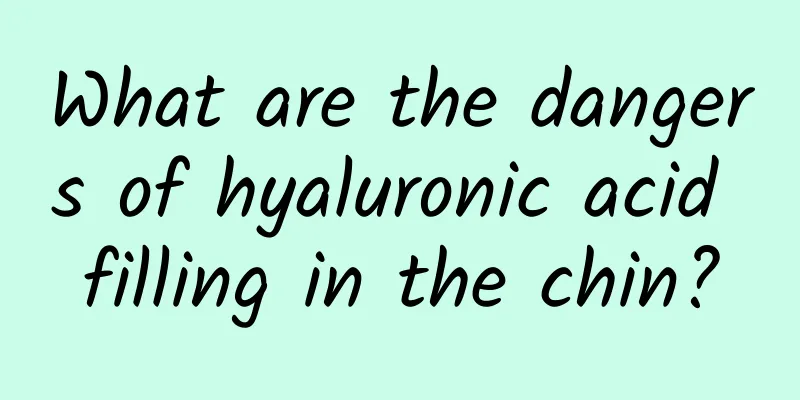What are the symptoms of vesicular tinea pedis? How to treat it?

|
Vesicular tinea pedis is a very common clinical skin tinea disease occurring on the hands or feet. It is caused by pathogenic filamentous fungal infection and is more common in tinea pedis than in tinea manuum. So what are the symptoms of tinea pedis? Symptoms Dipping type The main manifestations are whitening, erosion, and maceration of the skin between the toes with clear edges. Removal of the macerated epidermis leaves behind moist, bright red new skin. Blister type The main symptoms are blisters on the soles of the feet or palms, and even several blisters merging into larger blisters with clear boundaries, non-red skin, and desquamation of the blister walls. Scaly The main manifestation is desquamation, with a few blisters in between. The blisters are dry and desquamative, with clear edges and no obvious symptoms. Thickening The main symptoms are thickening of the skin on the palms, blisters and desquamation in summer, and skin cracking in winter. Self-diagnosis Vesicular tinea pedis often occurs in the summer. Symptoms include the appearance of rice-sized, deep blisters between the toes, on the edges of the feet, and on the soles of the feet. They are scattered or distributed in groups. The blister walls are thick, the contents are clear, and they are not easy to rupture. After a few days, the skin dries and flakes off, fusing together to form multi-chambered blisters. When the blister walls are removed, a honeycomb base and bright red erosive surface can be seen, causing severe itching. Diagnostic points 1. The skin in the affected area is dry, flaky, and hyperkeratinized, which causes the skin in the affected area to become noticeably thicker and prone to cracking in winter. 2. Clustered or scattered deep blisters appear on the affected area, which are difficult to break and cause obvious itching. The blisters will be absorbed naturally after a few days and the surface will peel off. It happens one after another and recurs repeatedly. 3. Small ring-shaped or arc-shaped papules are often seen on the edge of the heel. There is obvious itching and scaly desquamation. It can also occur on the palms and between the fingers, being more severe in summer and less severe in winter. 4. Wetness and rot are common between the toes. The epidermis is moist, softened, and white in color. After peeling, the base is bright red and eroded, and the itching is severe. Secondary fungal infection may occur and cause foul odor. Precautions 1. Develop good hygiene habits, do not wear other people's shoes and socks, do not use other people's towels and bath towels, and do not share wash basins and foot basins with others. Wash your hands and feet frequently, keep them clean and appropriately moist, and avoid scratching the affected area with your hands. 2. Avoid spicy and irritating foods and hair-raising foods, avoid smoking and drinking, eat a light diet, and eat more fresh vegetables and fruits. Treatment Drug treatment It is not advisable to use topical medications containing hormones. Instead, use pure Chinese herbal non-irritating topical medications such as Yucao and persist in using them. Take 10 grams each of realgar and coptis root, 30 grams each of sophora flavescens, wild yam, saposhnikovia divaricata, kochia scoparia, and schizonepeta tenuifolia, and 6 grams of borneol. First boil the first 7 herbs for 30 minutes, add the borneol after it stops boiling, remove the residue, and soak the affected area for 20 minutes when it is warm, 4 times a day. Each dose is used for 3 days, and 15 days is a course of treatment. Suitable for all types of tinea manuum. Take 30g each of Radix Angelicae Pubescentis, Fructus Cnidium, Herba Polygoni Multiflori, Radix Cynanchum, and Radix Scutellariae, and 20g each of Rhizoma Smilacis Glabrae, Fructus Sophorae Flavescentis, and Alumen. Take one dose per day, decoct in water to obtain appropriate amount of juice, soak the affected area, twice a day, 30 minutes each time. Suitable for those with tinea pedis and infections. |
<<: What causes lip inflammation and what are its types?
>>: What is a small intestinal hernia? How is a small intestinal hernia treated?
Recommend
Can I get pregnant if I have breast milk?
When pregnant women reach the late stage of pregn...
Why do I have backache when I am pregnant?
It is quite common to experience back pain when y...
What food is best for sha?
Sha is a common disease. Many people have a littl...
Tips for six-month-old babies not drinking water
Water is very important to us. The human body nee...
TCM treatment of allergic rhinitis
Allergic rhinitis, also known as allergic rhiniti...
Symptoms of brain tumor in 7-year-old children
Brain tumor is a common brain disease that affect...
Why does my stomach hurt after being hit on the testicles?
The testicles are a part that men always pay more ...
How to remove blood clots in eyes
The eyes are a very important part of the human b...
My tooth is loose and it still hurts.
A set of white and healthy teeth is not only a to...
Common diseases in rheumatology
Rheumatology and immunology is an emerging discip...
What should I pay attention to during surgery for congenital scoliosis?
Congenital scoliosis is caused by abnormal verteb...
How much do you know about Posterior Reversible Encephalopathy Syndrome?
Posterior reversible encephalopathy syndrome (PRE...
Symptoms of Lung Qi Deficiency
Perhaps in life, when we talk about lung qi defic...
What causes chapped hands in summer?
We all know that hands are more likely to crack i...
What is a cyst? How are brain cysts treated?
It is not easy to recover from a disease like cys...









